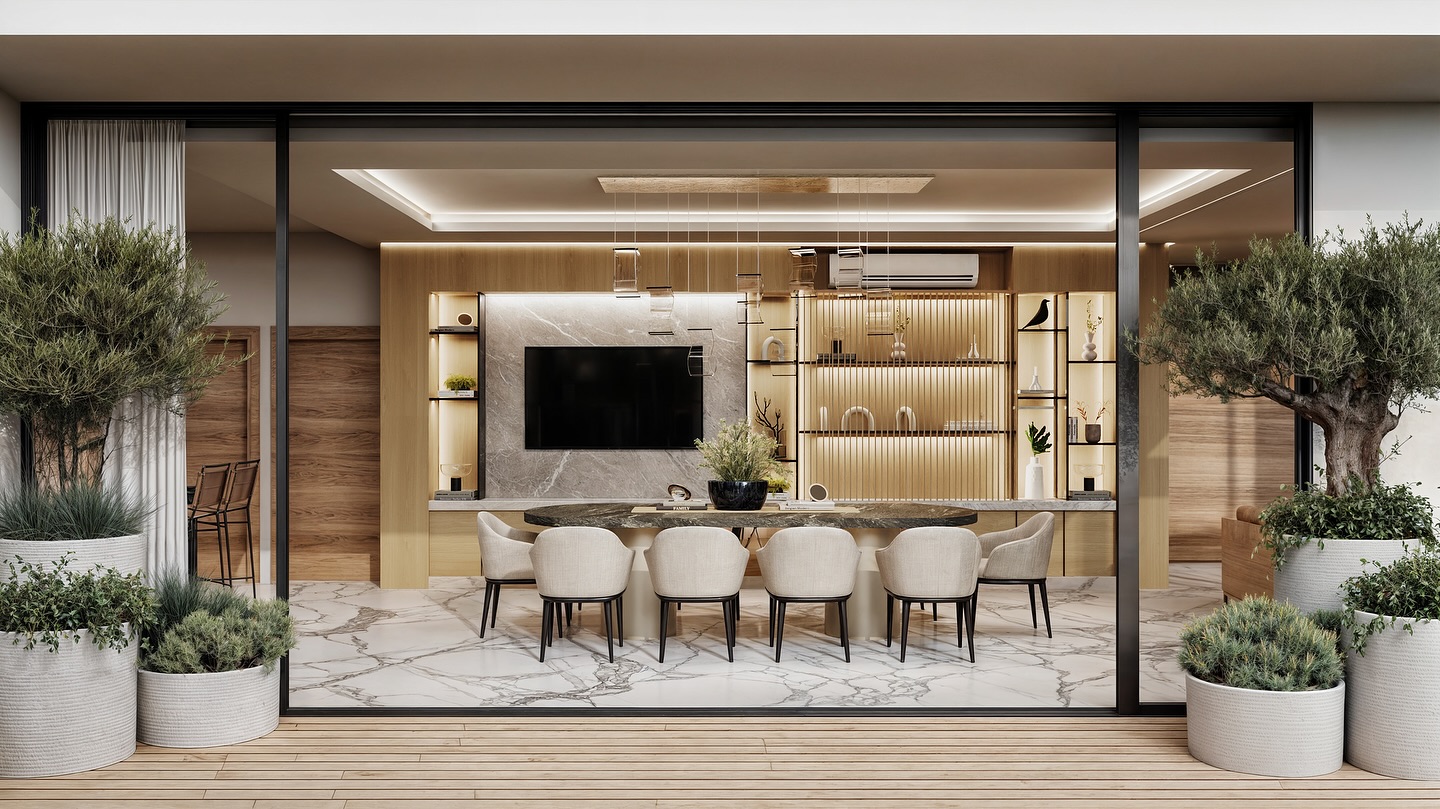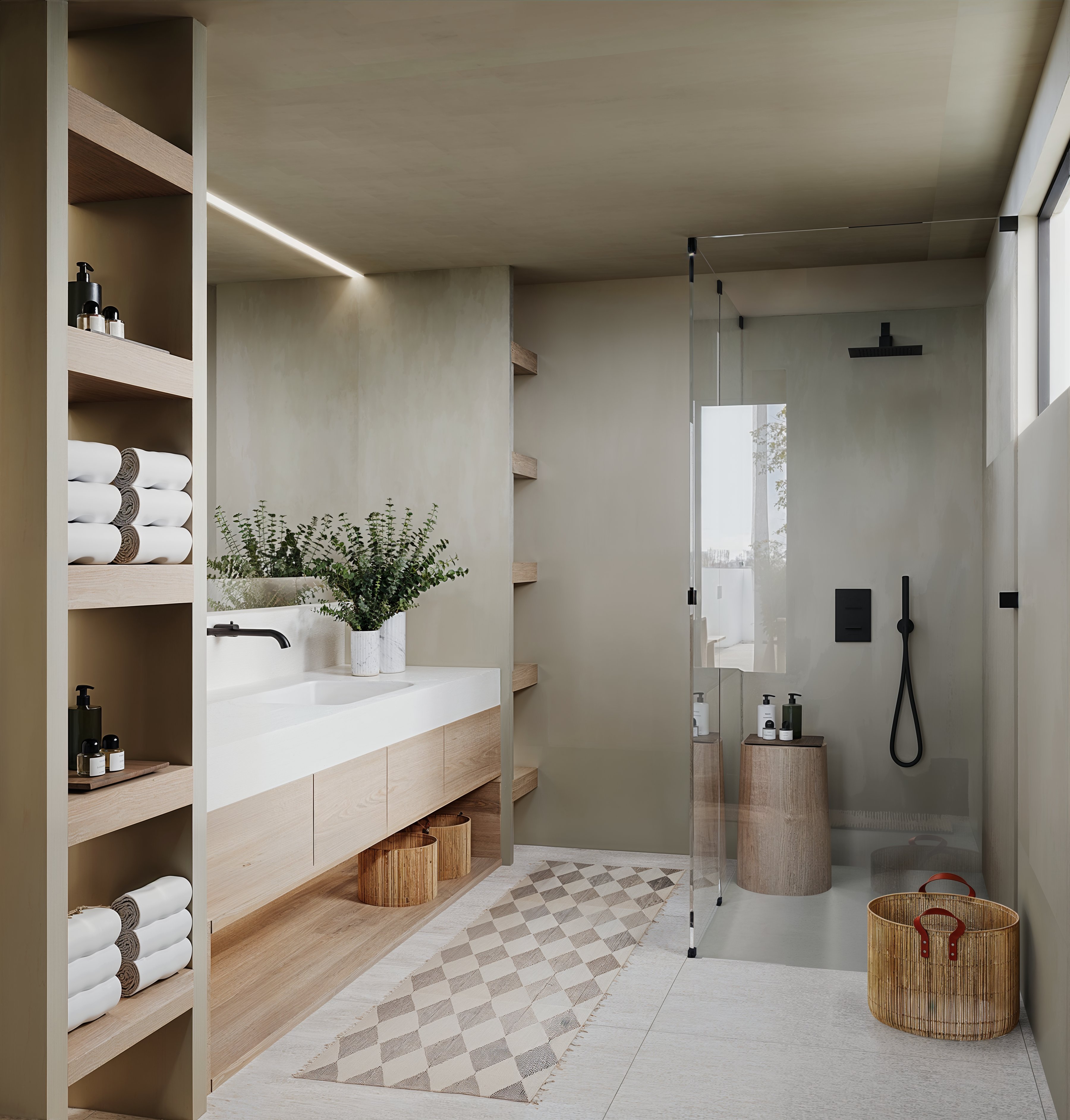How AI Is Revolutionizing 3D Rendering in Architecture

The architectural visualization industry is undergoing a significant shift—thanks to the integration of artificial intelligence (AI) into 3D rendering workflows. From automating mundane tasks to enhancing image quality, AI is changing how fast and how well we render architectural spaces.
At Ambar Estudio, we stay ahead of the curve by adopting AI-powered tools to speed up our rendering process while maintaining the visual quality our clients expect. Here’s how AI is revolutionizing architectural rendering—and how it compares to traditional methods.
1. Traditional Rendering Workflow
In a traditional rendering pipeline, artists manually build and light scenes, tweak material properties, and run high-sample renders using tools like V-Ray, Corona Renderer, or Enscape. This approach is effective but time-consuming:
* Manual lighting and camera setup requires a skilled eye and lots of trial and error.
* High-quality rendering demands hours (or days) of computing time—especially for animations or photorealistic visuals.
* Denoising and post-processing are handled by hand using tools like Photoshop.
While this method offers full artistic control, it can significantly increase turnaround time—especially for tight deadlines.
2. How AI Improves Rendering
AI-powered tools now assist or automate many of these steps, making the rendering process faster and more efficient:
* AI Denoising: Tools in V-Ray, Arnold, and Octane use deep learning to clean up noisy renders in seconds—drastically reducing render time.
* Auto-lighting and camera framing: AI can suggest optimal lighting angles and camera positions based on design intent.
* Material recognition: Algorithms can identify surfaces from reference photos and generate realistic material maps automatically.
* Style transfer and AI post-processing: Neural networks allow artists to apply a desired visual tone or mood—ideal for concept imagery.
3. Traditional vs AI-Assisted Rendering: A Comparison
* Speed: AI-assisted rendering can cut production time by up to 70% without sacrificing quality. Traditional methods are slower but offer more manual control.
* Quality: Traditional rendering still offers finer detail in expert hands, but AI tools now rival or even enhance certain visual aspects.
* Cost: Faster production equals lower costs. AI reduces the need for extended rendering sessions and rework.
* Scalability: With AI, studios can take on more projects or iterations without increasing team size.
Conclusion: Smarter Rendering Is Here
AI is not a replacement for creativity—it’s a powerful assistant. In architectural rendering, AI helps artists work faster, reduces repetitive tasks, and delivers sharper results in less time.
At Ambar Estudio, we offer 3D rendering services that help architects, developers, and interior designers bring their visions to life—faster and more effectively than ever before.
Curious how AI can improve your project? Let’s talk and explore the possibilities.
Written by Rafael Arredondo
Ambar Estudio Team
Related Articles


